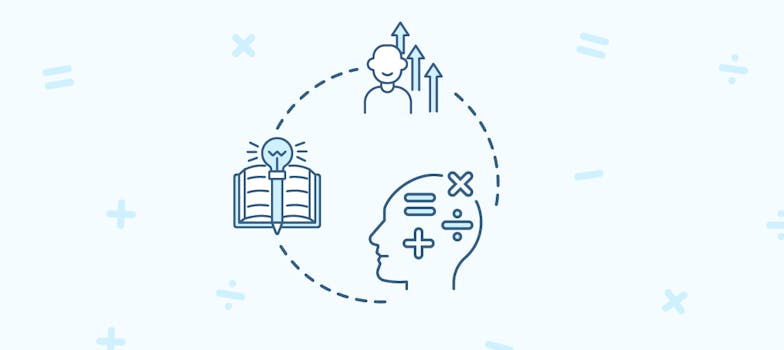There's hardly any job that doesn't involve math in some shape or form. Tax accountants and data analysts certainly have to deal with more complex calculations than copywriters or call-center agents, but generally speaking, corporations prefer their employees have a firm grasp on at least the baseline rules of arithmetic. Mathematical prowess is a sought-after cognitive skill that opens up numerous career opportunities.
This fourth and final installment of our series on training your cognitive abilities – in which we already covered your memory, spatial recognition, and vocabulary – focuses on the foundations of mathematical knowledge, without which complex fields like differential equations or curve sketching wouldn't be possible: arithmetic fundamentals.
Our approach to helping you improve your math skills is nothing new and certainly no earth-shattering revelation – we actually hope you're not insulted by its simplicity. But it is, in fact, so simple and so obvious that many people miss the forest for the trees.
Everyday mental arithmetic

Whenever you need to calculate something, try doing it without a pen, paper, or pocket calculator first. If you make this a habit, your math skills will noticeably improve over time – you’ll be able to add up numbers faster and with increased ease.
A great opportunity to stretch your math muscles is while grocery shopping: try mentally adding up the prices of the items you put into your shopping cart. In an age-old marketing ploy, supermarkets and retailers avoid round figures to make items appear cheaper. This makes it much harder to calculate everything in your head, but you should regard this as a challenge! Don't shy away from odd prices like $4.27 or $11.59, and don't guesstimate – try to add them up to the penny. At the counter, compare your result against your receipt.
It might help to mentally break the numbers apart and suspend the dot temporarily. Say you have to add up a bag peanuts at $1.17 and a bottle of soda at $2.42. First, you mentally transcribe the prices to 117 and 242, respectively. Then you add up the last digits of each number: 7 + 2 = 9. Remember the 9, then add up the first two digits of both numbers: 11 + 24 = 35. Now you just tag on the 9: 359. Insert the dot, and you have your solution: $1.17 + $2.42 = $3.59 for your evening in front of the TV.
Once you have developed a routine and feel comfortable with this method, you can incorporate multiplication and division into it: how much would you have to pay if you bought four, five, or six ready-made chilis at $3.46 each? And what's the price of one roll of toilet paper in the twelve-roll megapack at $15.88?
Keep this up, and you’ll see that with each shopping trip, you’ll make fewer mistakes – perhaps you’ll even spot ones the cashier has made! More importantly though, this will not only help you with grocery shopping. Routinely doing mental math stimulates your brain to create new neural connections and solidify existing ones, thereby sharpening the mathematical aspects of your cognitive abilities overall.
We hope you enjoyed this limited series of articles and got some good use out of them. If you haven't already, why not check the entirety of your cognitive skills using our comprehensive test? And if you already have, try taking it again to see if our techniques and exercises have helped you improve your cognitive abilities.
Thank you for following along. Now get that brain of yours to work!



